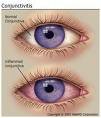Lindsay Lohan’s Dad: My Daughter ‘Needs To Clean House’
0 Comments Published by Rachel Baumbach May 28th, 2007 in Entertainment, Celebrity. Lindsay Lohan was arrested on Saturday in Beverly Hills for suspicion of DUI. Her Mercedes had struck a curb and investigators found what they believe to be cocaine at the accident scene.
Lindsay Lohan was arrested on Saturday in Beverly Hills for suspicion of DUI. Her Mercedes had struck a curb and investigators found what they believe to be cocaine at the accident scene.
It was her third crash within the last two years. Her father believes that she needs to turn to religion in order to set her life straight.
“When Lindsay puts God back in her life, things will turn around,” he said in an interview as quoted by Newsday. “Until then, I’ll just keep praying.”
When asked directly if Ms. Lohan has a drinking problem, he responded: “Anything that causes a problem when you do it is a problem. As far as what they found in that car, whether it was Lindsay’s or anyone else’s, every person in that car is accountable.”
He also believes that some housecleaning is in order.
“Lindsay needs to clean house and start all over again from the beginning with the people that were with her in the beginning, and that’s her family,” he opined.
 Researchers at the Abramson Family Cancer Research Institute of the University of Pennsylvania and the Dana-Farber Cancer Institute describe in this week’s issue of Science a new candidate breast-cancer susceptibility gene. The Rap80 gene is required for the normal DNA-repair function of the well-known breast cancer gene BRCA1.
Researchers at the Abramson Family Cancer Research Institute of the University of Pennsylvania and the Dana-Farber Cancer Institute describe in this week’s issue of Science a new candidate breast-cancer susceptibility gene. The Rap80 gene is required for the normal DNA-repair function of the well-known breast cancer gene BRCA1.
Cancer-causing mutations in the BRCA1 protein cause it to fail to bind to the Rap80 protein. Consequently, BRCA1 is unable to identify DNA damage sites in the genome. When BRCA1 fails to fix DNA damage, cancer-causing mutations accumulate, spawning the development of breast and ovarian malignancies.
“With this current discovery, we have made significant new insights into the molecular mechanism by which BRCA1 recognizes sites of DNA damage that breast-cancer-causing mutated forms of BRCA1 cannot recognize,” says co-senior author Roger Greenberg MD, PhD, Assistant Professor of Cancer Biology at Penn. “Now we have gained a partial understanding of the molecular basis between cancer-causing BRCA1 failures to fix DNA damage versus normal BRCA1’s ability to fix DNA damage.”
In this study, the researchers found Rap80 binds to the region of the BRCA1 protein that is necessary for recognizing sites of DNA damage. In the 1990s, investigators discovered that BRCA1 was involved in DNA repair by maintaining the normal number and structure of chromosomes. DNA breaks that aren’t repaired can lead to cancer by increasing the rate of mutations, cancer-causing changes in the gene sequence.
More specifically, modification of proteins in the cell nucleus – by another protein called ubiquitin – that are tightly bound to DNA are responsible for signaling BRCA1 via Rap80 to action. Rap80 binds to specific types of ubiquitin that concentrate at DNA damage sites, enabling BRCA1 to be recruited to sites of damage.
BRCA1 and BRCA2 mutations account for less than 50 percent of inherited breast cancer. “The genetic basis of breast cancers in other families has been largely unknown,” explains Greenberg. “These families aren’t able to make informed choices about screening and treatment, prophylactic or otherwise, the way the BRCA families can.”
Researchers from multiple labs, including Penn and those led by co-senior author David M. Livingston at Dana-Farber, are finding that many of these non-BRCA families have mutations in genes that have a relationship with BRCA1. Many of the genes that encode these proteins are also altered in familial breast cancer.
“Thus Rap80, by interacting with a BRCA1 region that is essential for BRCA tumor suppression, now becomes a candidate to investigate as another breast cancer disease gene in families that do not have BRCA1 and BRCA2 mutations, but have a history of breast and/or ovarian cancer,” says Greenberg. “In collaboration with other researchers we are currently looking to see if families that have a history of breast cancer, but lack BRCA1 and BRCA2 mutations, have any gene sequence changes in Rap80.”
This research was funded by the National Cancer Institute and startup funds from the Abramson Family Cancer Research Institute.
Co-authors are Bijan Sobhian, David M. Livingston, Aedín C. Culhane, Lisa Moreau, and Bing, Xia from Dana Farber, and Genze Shao and Dana R. Lilly from Penn.
Source: PENN Medicine

Thousands of motorcycle riders from across the United States have rallied in Washington for the annual Memorial Day Holiday event.
President Bush greeted a delegation of “Rolling Thunder” riders Sunday at the White House. The president’s chief of staff Josh Bolton and Interior Secretary Dirk Kempthorne, accompanied by rally leaders, motored up the White House driveway to meet with Mr. Bush.
Organizers hold the event to focus attention on the health concerns of military veterans and on the issue of military personnel missing in action.
The bikers, many of them veterans of the Vietnam war, gathered at the Pentagon Sunday morning. They rode in formation past the Vietnam Veterans Memorial in Washington. Their route then circled the National Mall, a park-like expanse between the Lincoln Memorial and the United States Capitol.
On Monday, Memorial Day, the president will take part in a wreath laying ceremony at Arlington National Cemetery.
The holiday pays tribute to fallen American service members. The Memorial Day weekend also is seen as the unofficial start of summer in the United States, with people often celebrating with picnics and other outdoor activities.
Source: VOA

The U.S. Food and Drug Administration is alerting health care professionals and their patients who wear soft contact lenses about a voluntary recall of Complete MoisturePlus Multi Purpose Solution manufactured by Advanced Medical Optics of Santa Ana, Ca.
The company is taking this action as a precaution because of reports of a rare, but serious, eye infection, Acanthamoeba keratitis, caused by a parasite. The link between the solution and the infection was identified as a result of an investigation by the Centers for Disease Control and Prevention (CDC).
Consumers who wear soft contact lenses should stop using the solution, discard all partially-used or unopened bottles and replace their lenses and storage container.
“We believe the company acted responsibly in taking this voluntary action and support their decision to be proactive in the interest of public health,” said Daniel Schultz, M.D., director of FDA’s Center for Devices and Radiological Health. “FDA and CDC are working closely with the company to collect additional information and we will continue to alert consumers and advise them as more information becomes available.”
Acanthamoeba keratitis may lead to vision loss with some patients requiring a corneal transplant. The infection primarily affects otherwise healthy people who wear contact lenses.
Consumers should ask their doctor about choosing an appropriate alternative cleaning/disinfecting product and seek immediate treatment if they have symptoms of eye infection as early diagnosis is important for effective treatment. The symptoms of Acanthamoeba keratitis can be very similar to those of other more common eye infections and may include eye pain or redness, blurred vision, light sensitivity, sensation of something in the eye or excessive tearing but Acanthamoeba is more difficult to treat.
It is estimated that Acanthamoeba keratitis infections occur in approximately 2 out of every 1 million contact lens users in the United States each year. However, in a multi-state investigation to evaluate a recent increase in Acanthamoeba keratitis cases, CDC determined that the risk of developing AK was at least seven times greater for those consumers who used Complete MoisturePlus solution versus those who did not. Additional information regarding the CDC results is available at the CDC website http://www.cdc.gov/mmwr.
“The ongoing CDC investigation is a collaborative effort,” said Michael Beach, M.D., a Division of Parasitic Diseases team leader with CDC. “We are working with FDA, state, territory, university, and clinical partners in an effort to further understand whether usage or contamination of this solution led to these Acanthamoeba infections.”
All contact lens users should closely adhere to the following measures to help prevent eye infections:
- Remove contact lenses before any activity involving contact with water, including showering, using a hot tub, or swimming.
- Wash hands with soap and water and dry them before handling contact lenses.
- Clean contact lenses according to manufacturer guidelines and instructions from an eye care professional.
- Use fresh cleaning or disinfecting solution each time lenses are cleaned and stored. Never reuse or top off old solution.
- Never use saline solution and rewetting drops to disinfect lenses. Neither solution is an effective or approved disinfectant.
- Schedule regular eye exams with your eye care professional
- Wear and replace contact lenses according to the schedule prescribed by your eye care professional.
- Store lenses in a proper storage case.
- Storage cases should be irrigated with sterile contact lens solution (never use tap water) and left open to dry after each use.
- Replace storage cases at least once every three months.
FDA and CDC want to gather information related to Acanthamoeba keratitis in contact lens users. Report adverse events related to these products to MedWatch, the FDA’s voluntary reporting program: www.fda.gov/medwatch/report.htm; Phone: ; Fax: ; Mail: MedWatch, Food and Drug Administration,
Consumers who believe they are in possession of the recalled product may call the company at .
Source: Additional information about Acanthamoeba infection is available from the CDC website.
